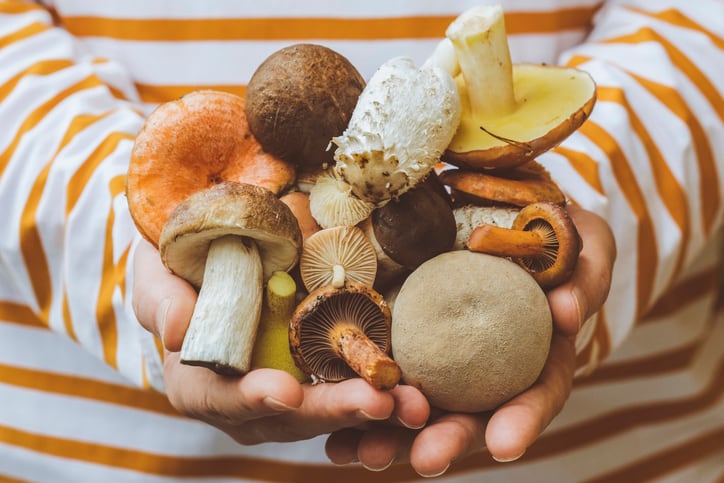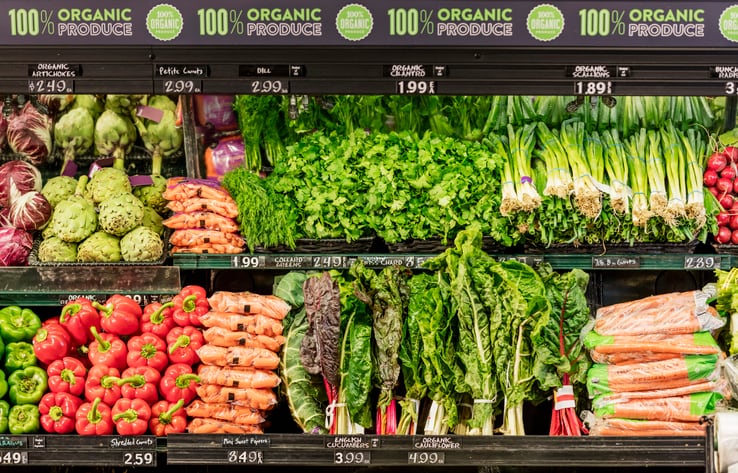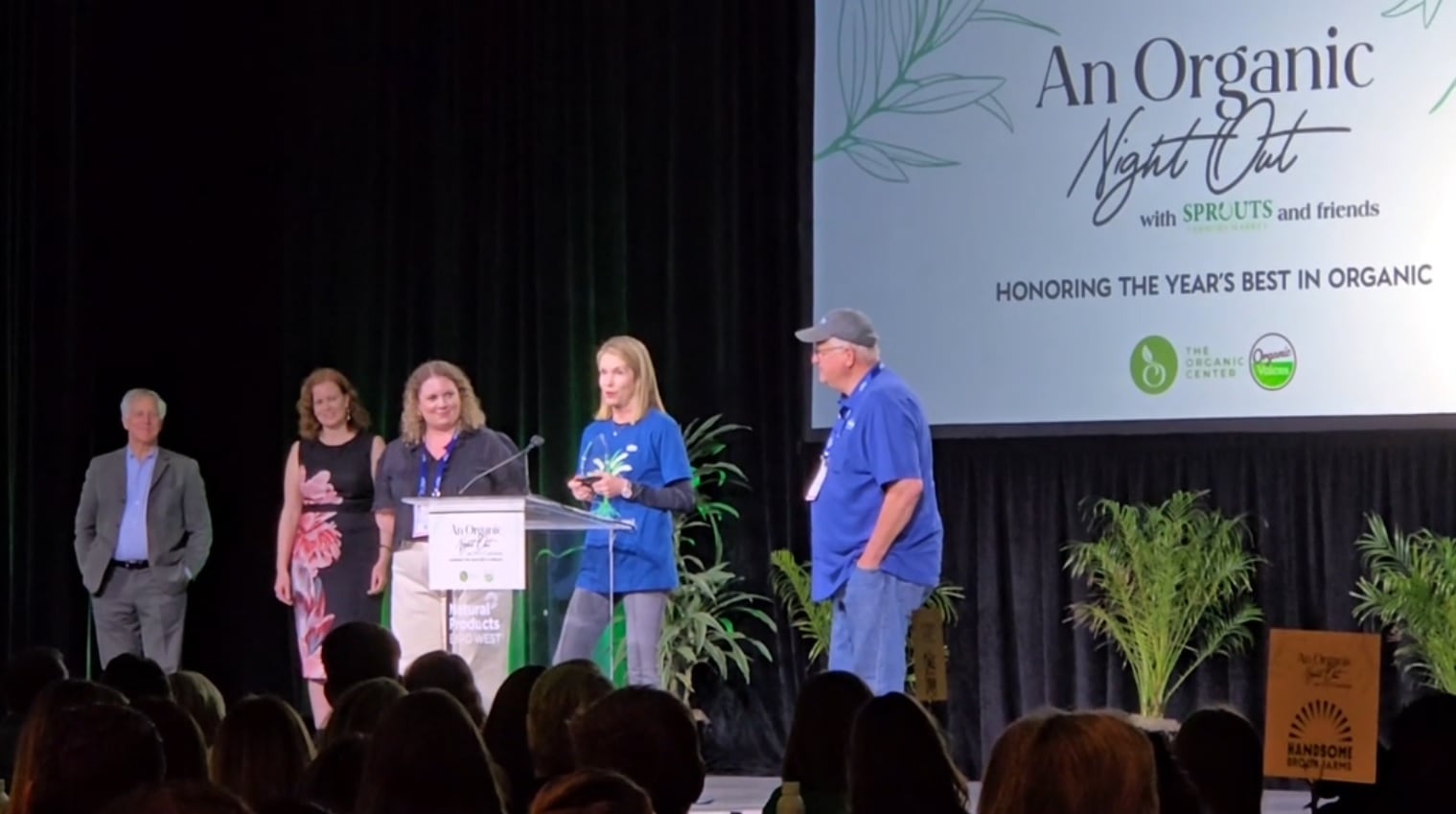To help USDA Organic stand out amid the proliferation of green claims, including ‘regenerative’ and ‘non-GMO,’ the Organic Trade Association debuted a first-of-its-kind marketing campaign to help consumers understand fully the benefits organic offers people and the planet.
The multi-prong “Seal Makes it Simple” campaign aims to clarify what USDA Organic certification entails after consumer research, including a survey conducted by Edelman Data and Intelligence at the behest of the OTA in 2022, revealed widespread confusion about how the certification stacks up to competing single-value or ambiguous claims.
Purchase data also show that this confusion may be dampening organic sales even as the industry continues to grow – underscoring the need for and potential impact of a coordinated consumer education effort, like the Seal Makes It Simple campaign.
How will the campaign impact the market?
Even though organic sales now exceed $71 billion in US retail and are verging on 6% year-over-year growth, the OTA sees potential for even higher sales and household penetration by educating consumers about the full benefits of the USDA Organic certification and how to quickly identify products that meet the high standard.
“Our consumer research continues to show that organic, by far, is the most recognized and trusted of the food labels,” OTA Co-CEO Matthew Dillon said.
But, he acknowledged, “there are, of course, emerging labels that are starting to gain more consumer attention, like some of the regenerative” claims, and other single-attribute claims – like non-GMO – which consumers may not know are included within organic.
“We want people to understand the attributes, because sometimes they might not understand that something they care about, like no growth hormones or no antibiotics, is included within organic. And there is a bit of a missed opportunity there to make sure that they get the full picture of what organic offers. It is not a singular dimension. It offers multidimensional benefits,” Dillon said.
“Our members are continually trying to assess how to best keep that holistic sense, but also call out the individual attributes,” of USDA Organic Certified, “and you will see in this campaign, we attempt to do both: We attempt to both simplify purchasing by driving folks to look for the seal, but also, especially at the digital level, get folks to recognize that some of those attributes they value highly are included within organic,” he added.
What will the campaign entail?
To this end, the Seal Makes it Simple program will include integrated media, digital and retail campaign components that aim to simplify the shopping experience for consumers by directing them to look for one seal – USDA Organic Certified – that represents multiple values.
“The goal is really to continue to help consumers have this awareness that if they want to make choices about their personal health, what is good for animal welfare, what is good for the planet, that organic is that simple and easy choice,” Dillon said.
To do that, the campaign will leverage retail touchpoints, like end caps and shelf talkers, as well as digital advertising, such as on YouTube and elsewhere, that breaks down what USDA Organic entails.
While most of these efforts will target consumers in six regional markets – Atlanta, Ga., Indianapolis, Ind., Charlotte, NC, Tampa, Fla., Louisville, Ky., and Lubbock, Texas – consumers nationwide can learn more at the campaign’s landing page www.sealmakesitsimple.com.
The landing page’s simple line drawings and limited color palette are a sharp deviation from how organic players have told their stories in recent years – an intentional decision that Dillon says represents the campaign’s mantra and which should resonate with younger shoppers.
“So many organic campaigns look alike. It is the beautiful photo of the cow in the field and the farmer and the farmer’s kids walking through a gorgeous pasture, and all of that emotional, visual photos or artwork is a beautiful thing, but there was a sense of ‘It’s time to try something new,’” Dillon explained.
“And given that one of our goals was to address consumer confusion and create this clarity, the concept of Seal Makes it Simple calls for a simple campaign,” he added. “So, the graphics and the colors, black and white imagery, line drawings, fluid and flowing” allow the USDA Organic’s green logo to pop and the main values to stand out.
“Its simplicity, I think, does make it bold, and will make it pop in a very cluttered visual landscape, both in retail and digital,” Dillon said.
While the landing page appears simple, it does allow consumers who want to know more information to easily scroll laterally to learn more about specific attributes and even click through to another website with more details.
Campaign dovetails with MAHA priorities
The campaign debuts at a time when nutrition is emerging as a top focal point for the Trump administration and will highlight how USDA Organic hits on many of the priorities of the Make America Healthy Again movement.
“It is quite clear from the leaked MAHA report that there is not going to be a regulatory crackdown on the use of pesticides and herbicides, and there is not going to be a radical shift in what is allowed in terms of preservatives and flavorings. But organic offers much of what MAHA wanted without the additional regulations needing to be enforced upon the agriculture and food sector at large,” said Dillon.
“Farmers, businesses and consumers can opt into organic and check many of the boxes that the MAHA movement cares about when it comes to no antibiotics, no growth hormones, no artificial or synthetic flavors, colors or preservatives,” he explained. “So, we think this is a good entry point to expanding that opportunity for the things this administration cares about, and hope that we can continue to work in a partnership to grow that and make it more accessible to more people.”
OTA angles for additional funding
The “Seal Makes it Simple” campaign is possible thanks to a USDA organic market development grant for $2.2 million that OTA received in 2024 and matching funding from industry partners, including Organic Voices.
“We believe that we need ongoing partnership with the USDA to continue these types of campaigns, and that it really will drive a couple of things that this administration cares deeply about,” Dillon said.
He explained that OTA is “very much focused on the next iteration of these grants,” which he explained will focus on key priorities for the Trump administration, including domestic production and alleviating bottlenecks and challenges that restrict organic beef and dairy.
He added that OTA and its members “hope that we can continue to work in a partnership to grow that and make it more accessible to more people, make people understand those benefits better” and help them opt into eating food that reflects their values.



